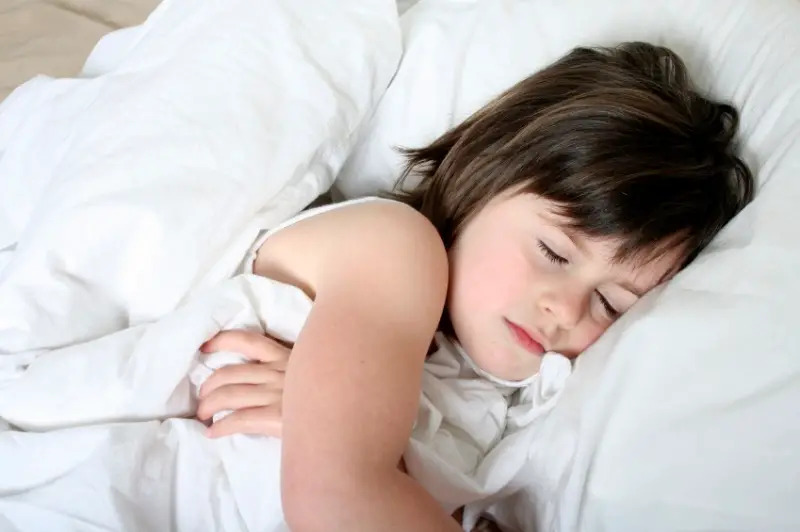Patty Tucker, PA-C, sleep coach and consultant at the Family Sleep Institute, shares the truths behind five sleep myths, including the dangers of using sleep aids, a typical good night’s sleep, and how much sleep you need.

Healthy sleep is an essential need in all of our lives and with it we are healthier and happier. The Family Sleep Institute busts five sleep myths to help families get better sleep in 2013.
Lately we’ve all been hearing and reading a lot about how to get better sleep; and that’s a good thing. Sleep is important. Right up there with exercise and good nutrition, sleep rounds out “The Big Three” of how to stay healthy and live a long time.
We’ve been told over and over that our bedrooms should be cool, dark, and quiet. We know we should have a routine and go to bed at the same time each night. We know we shouldn’t eat a big meal too close to bedtime. We know these things by now—don’t we?
But there are other things about sleep we think we know, that may not necessarily be so…
Here are five sleep myths we’d like to bust right now.
1) “Falling asleep before my head hits the pillow is a sign of healthy, normal sleep.”
Not necessarily so. Normally it takes 10-20 minutes to fall asleep. Falling asleep immediately is more likely a sign of sleep deprivation, a signal your body needs more sleep than you’ve been getting lately.
2) “I sleep great—like a log—never moving or waking once during the night.”
Actually, waking 1-3 times during the night is normal. A night of healthy sleep is composed of four to five sleep cycles. Between each of these cycles, we naturally come very close to waking or actually wake up completely. We may roll over or adjust the covers. Often, the time we are awake is so short we don’t notice or remember it in the morning. Other times we are more aware. Waking in the night is only considered a “problem” when you have regular difficulty getting back to sleep; again in 10-20 minutes or so.
3) “I don’t get much sleep during the work week but I make up for it on the weekend by sleeping in and taking long naps.”
You may be able to pay off a little of your accumulated sleep debt this way, but it’s still not the same as getting adequate sleep on a regular basis. If your body needs 8 hours of sleep and you get only 6 each night of the week, you are 10 hours in debt by Friday. Most sleep experts agree that you may be able to pay off sleep debt by adding an hour or two of sleep to your nightly quota on a regular basis for awhile, but sleeping in huge chunks is just as likely to disturb your circadian rhythms, making it even harder to maintain regular schedules in the future. Imagine if you ate nothing but salads Monday through Friday and then gorged yourself on everything in the cupboard on the weekends. You might average out your weekly calorie count this way, but could you really think it is a healthy way to eat? Sleep is like that too…
4) “The sleep aids you can get at the drugstore are safe and effective.”
Most over the counter sleep drugs contain an antihistamine, usually diphenhydramine (Benadryl(R)). Diphenhydramine can certainly knock you out, but it’s not the same as normal sleep. From time to time, it may be better than nothing, say if you have severe allergies keeping you awake, but regular use of these products can rob you of the repairing, restorative sleep process you really need. Also, antihistamines can leave you groggy and fuzzyheaded during the day. They increase the risk of falls in the elderly. They can lead to urinary retention or stress incontinence. There are other bothersome side effects and taking them regularly can become habit forming.
5) “I get by just fine on six hours of sleep.”
We frequently hear this myth spoken out loud—predictably by busy entrepreneurs or active social butterflies. The truth is the typical human body requires between seven and nine hours* of sleep time each night to repair the damage done, restore the chemicals depleted, and rebalance the chaos created during the average day. Genetic research has shown that only 3 percent of people truly thrive on six hours of sleep or less.
*Children and teens need even more.
So, tonight as you follow your bedtime ritual, tend to your cool, dark, and quiet sleep sanctuary, and slip gently into your slumber, you can rest more easily knowing you now know the difference between many sleep myths and sleep truths.
Patty Tucker, PA-C, sleep coach and consultant and adjunct faculty of the Family Sleep Institute, is a graduate of the Stanford School of Medicine Physician Assistant Program. The Family Sleep Institute is the first comprehensive yet affordable child sleep consultant certification program based on 15 years of experience by the leading child sleep expert Deborah Pedrick.
Also see:
Five Tips to Make Sure Your Child is Getting Enough Sleep
What are the Different Sleep Training Methods?
What are the Guidelines to Keep in Mind When Sleep Training a Baby?





















